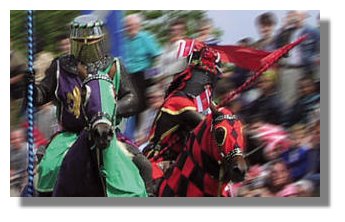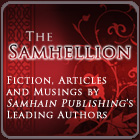
Welcome back to Scotophile Monday! Here is where I stick interesting, amusing or outrageous tidbits about Scotland gleaned from the WWW. All sources are credited. Click the Read More link to get started!
"This is Glesca - We'll Just Set Aboot Ye"
The Scottish Parliament is to recognise the members of the public who went to the aid of the solitary, unarmed police officer on duty at Glasgow airport when a Jeep was driven into the airport's main terminal building and set on fire on 30 June. One of those involved suffered a broken leg and ended up in the same hospital as one of the attackers. John Smeaton, a baggage handler who had "got stuck in" to the terrorists amid the flames and minor explosions, became an overnight celebrity as he animatedly described in televised interviews his role in the incident. In typical west of Scotland fashion he recounted how "me and other folk were just tryin' tae get the boot in and some other guy banjoed him!" When an ITV news reporter asked him "What message do you have for the bombers?" he replied "This is Glesca - we'll just set aboot ye".
Tenacious
The Tenacious is the world's largest wooden tall ship. She is one of two square-rigged ships owned by the Jubilee Sailing Trust, a charity which helps disabled people to enjoy the challenge and adventure of tall-ship sailing. She sailed up the Clyde at the start of this week and will take a starring role in the Glasgow River Festival this weekend. The tall ship was moored for most of the week beside the even taller Finnieston Crane, not far from the Scottish Exhibition and Conference Centre. The new "Squinty Bridge" across the river stopped the Tenacious from sailing further up the river.
It Can Only Get Better?
Newly-weds usually have a long honeymoon spell when everything is sweetness and light, don't they? Well, not for one Aberdeen couple. After a romantic wedding at Ardverikie Estate (made famous by television series Monarch of the Glen) the bride ended up in court for assaulting her husband with her stiletto heels at the Hilton Treetops Hotel a few hours after the ceremony. The battered groom went to reception holding a blood stained towel to his head - and worried staff called the police. When they arrived, they found the distraught bride still in her wedding dress and the room where the couple were due to spend their first night together damaged, with broken glass and wires pulled from electric sockets. The bride was arrested and was later fined £250. Her solicitor reported that the couple were still living together and had offered to pay the hotel for the damage caused - estimated at £500. This being the electronic age, the story has been reported in newspapers around the world...
Research into the Historic Center of Royal Power
Visitors to Scone Palace this week were able to observe archaeologists making preliminary geophysical surveys in the grounds. They are attempting to unravel more about the abbey which once stood there and the famous Moot Hill . That was where generations of Scottish monarchs, including Robert the Bruce, were crowned while seated on the Stone of Destiny. Scone developed from an early medieval royal settlement into a massive Augustinian abbey in the 12th century. Archaeologists are puzzled that such an important building left so little trace above ground. Very little archaeological work has actually been done before at Scone, although it is a place of immense historical importance. The geophysical remote sensing allows the researchers to look underground for buried structures. The present Scone Palace dates from around 1600. This was after the Reformation when the Abbey was sacked and burned by an angry mob. Of course, it is possible that the former abbey provided at least some of the stonework for the new building.
This Week in Scottish History
July 15 1889 - National Portrait Gallery for Scotland opened in Edinburgh.
July 16 1328 - David II, son of Robert I (the Bruce) married Joan, sister of Edward III (he was 4, she was 7).
July 16 1832 - 31 Shetland boats (known as "sixerns") sank in a storm with the loss of 105 crewmen. The event is still recalled as "The Bad Day".
July 16 1970 - 13th Commonwealth Games opened in Edinburgh.
July 17 1652 - Great Fire of Glasgow, destroying nearly one third of the city.
July 17 1695 - Bank of Scotland, first bank to be established by an Act of the Scottish Parliament, opened.
July 17 1790 - Adam Smith, author of "Wealth of Nations" died.
July 18 1290 - Treaty of Birgham whereby Edward I guaranteed survival of Scotland "separate, apart and free without subjection to the English nation".
July 18 1792 - John Paul Jones, naval hero of the American Revolution, died; he was born in Kircudbrightshire in 1747.
July 19 1333 - Battle of Halidon Hill in which Sir Archibald Douglas (guardian of David II) routed by Edward Balliol and Edward III. Scots losses were nearly 600, English losses 14.
July 20 1332 - Thomas Randolph, Earl of Moray and Regent of Scotland, died at Musselburgh. Donald, Earl of Mar, appointed Regent in his place.
July 20 1651 - Battle of Inverkeithing. Royalist force supporting Charles II failed to halt advance of army of Oliver Cromwell heading for Perth.
July 21 1796 - Robert Burns died in Dumfries, aged 37.
July 21 1985 - Sandy Lyle won Open Golf Championship.
Scottish Proverb
Be happy while you're living, for you're a long time dead.
All of the above are from Rampant Scotland
Wildlife Watch Survey
THE second Wildlife Watch survey, organised by The Scotsman and the Scottish Wildlife Trust (SWT) in March, was an even greater success than the first, with an increase in the number of replies received from all over Scotland. Sightings of birds, mammals and plants were sent in from the Outer Hebrides to the Scottish Borders, from Argyll and Dumfries and Galloway to Inverness-shire. Many records also came from children. Read more
Race to study Iron Age roundhouses before they are lost to sea storms
EXPERTS are battling against time and the weather to excavate the remains of a historic island site which was uncovered by storms. Hurricane-force winds exposed 2,000-year-old Iron Age houses at Baile Sear, North Uist, in January 2005. A team from St Andrews University is keen to investigate the roundhouses before they vanish in another storm, and believe they have just one winter left. Read more
'Genius' Bruce wins by a head
HIS greatest adversary labelled him "King Hob" - the royal yokel - and many academics have questioned his intellectual prowess. But Robert Bruce, the medieval guerrilla leader who outwitted the English to re-establish an independent Scotland, has been classed a "genius". Tests carried out by a team of Scottish scientists on a cast of the skull of 'Good King Robert' and the application of a formula relating brain size to intelligence have revealed that the 14th-century monarch could have had an IQ of 128. Read more
Skelpaig: Scottish Folk Trio
SKELPAIG are an energetic trio of musicians from across the Highland and Islands who have been delighting audiences since spring 2006 with their blend of swirling melodies and high-energy harmonies. Read more
Blog of the Week
Would you like to work, live, move to Scotland? Or just to find out how is life in Scotland? Here's something much better than travel brochures -- read blogs written by expatriates! Read more
15 July 2007
Scotophile Monday
at
7:12 PM
![]()
Labels: Scotophile Monday
Subscribe to:
Post Comments (Atom)





















2 comments:
I love that photo!
And the poor honeymooning couple...I'm trying sooo hard not to laugh. So what exactly was the fight over anyway? I hope it wasn't the wedding night, that doesn't bode well.
wow!it’s great to read articles that come directly from the heart. Thanks for sharing
Post a Comment